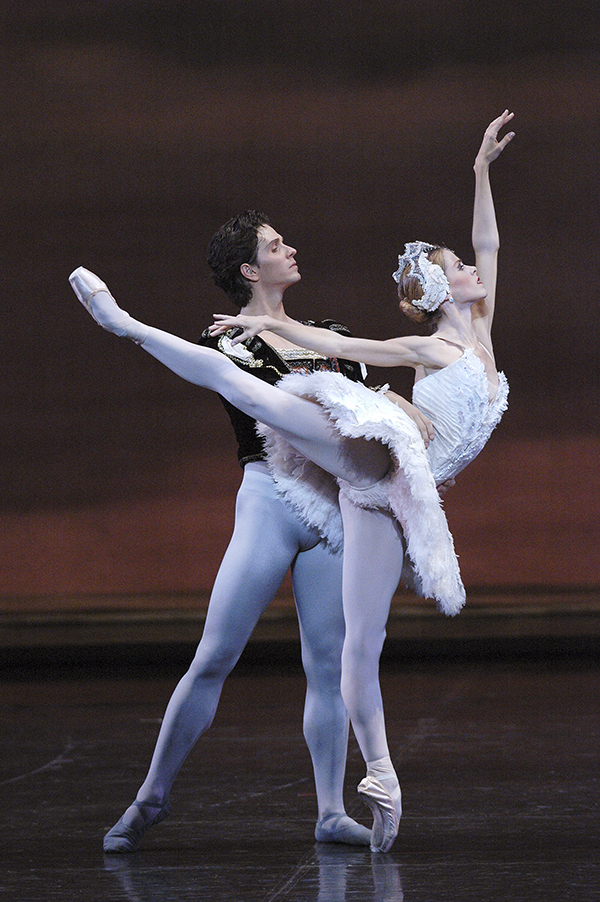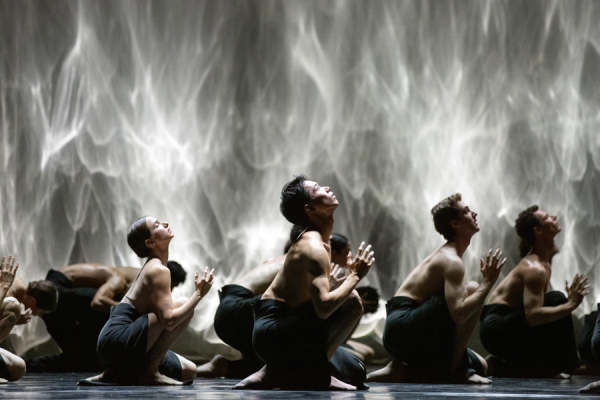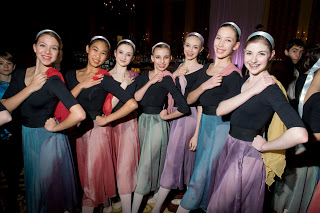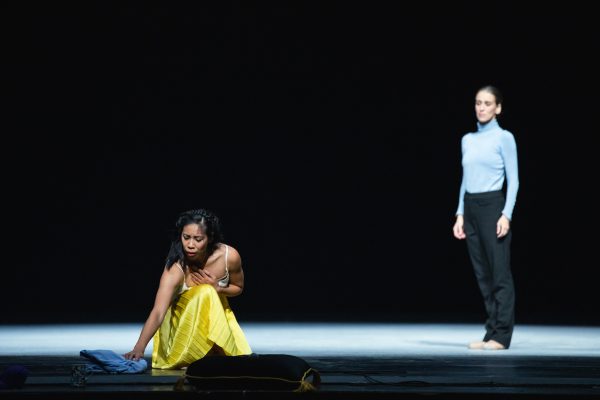The National Ballet of Canada explores the dark side of love in a regal production of choreographer James Kudelka’s Swan Lake, which opened at the Four Seasons Centre on Thursday June 15.
One of Pyotr Ilyich Tchaikovsky’s three ballets, Swan Lake adapts traditional Russian folk tales to tell the story of Prince Siegfried and his beloved Odette, a swan. The original ballet, premiered by the Bolshoi company in 1877 with choreography by Julius Reisinger, consisted of two acts. Kudelka’s version, first performed by The National Ballet of Canada in 1999, follows the story through a prologue and four acts. This opening night featured dynamic performances by Principal Dancers Guillaume Côté, Heather Ogden, Naoya Ebe and Piotr Stanczyk.
One day, while hunting in a marsh with his friend Benno (Ebe), Prince Siegfried (Côté) encounters the sorcerer Rothbart (Stanczyk), a mysterious figure who shows him a beautiful white swan, Odette (Ogden). Siegfried falls for Odette, but the two are separated by Rothbart, who continues to thwart their relationship throughout the ballet. Notably, the two characters later meet at court, where Rothbart entices Siegfried with Odile (also performed by Ogden), a strange and captivating figure dressed in black. The Prince mistakes Odile for Odette and expresses his desire to marry Odile, betraying his beloved and bringing about the court’s downfall. The Prince finds the real Odette in Act IV, though once more Rothbart intervenes. In an altercation, Siegfried dies, leaving the swan to mourn her beloved.
Conductor David Briskin led the orchestra with ease through the score, which exhibits great range, at times ludic and bright, at others dark and brooding. Santo Loquasto’s set and costume designs emphasize the grandeur of Tchaikovsky’s composition and the story’s themes of love, deception and disillusion. The ballroom scene in Act III displays the lavishness of life at court – Knights and Ladies dance in rich purple costumes that evoke the late medieval period, while the Queen stands out in her golden headdress. The royal hunting ground of Act I suggests more simple pleasures in its earth tones, animal hides and simple, layered clothing.
Compared to these settings, the marsh and lakeside of Acts II and IV are understated, though still replete with sets and backdrops. Indeed, the processions of white and black swans in these acts, visual highlights in the ballet’s choreography, might have appeared even more startling against a simpler background. In Act IV, ballerinas clad in black swarm the stage, extending their long arms in gestures that evoke swan necks. Unfortunately, the sight of the castle sinking beneath shiny, rippling waves in the background detracts from the elegance of the scene.
Swan Lake eschews complicated narrative in favour of a suggestive, romantic approach to storytelling. Kudelka has the space to showcase some of the company’s star talents. Côté and Ogden demonstrate grace and significant range in the lead roles, while Ebe’s Benno commands the audience’s attention with a remarkable stage presence as Siegfried’s poised and charming friend.
The production also gives prominence to some of the company’s First Soloists. Tanya Howard delights as the naturally sensual and coy Wench, and proves adept at using her long, lithe limbs to her advantage. Another impressive performance comes from Jenna Savella, who maintains a spirited yet restrained energy in her solo as the Spanish Princess in Act III. As with the other princesses’ solos, Savella’s dance melds stylized folk elements with traditional ballet moves, culminating in a grand jeté. Overall, the ballet exhibits an entertaining variety in its choreography, including solos, pas de deux, pas de trois and larger combinations of dancers, as in the impeccably synchronized dance of the Four Little Swans in Act II.
Kudelka’s Swan Lake plays up the inherent contrasts in the story, not only between Odette and Odile, but between other characters and elements as well. In his confidence, focus and loyalty, Benno serves as a foil for the melancholic, hesitant Siegfried. Similarly, Howard’s Wench provides a lighthearted contrast to Ogden’s proud Odette/Odile. The pomp and ceremony of the royal ballroom stands out against the wildness of the hunting ground, the marsh and the lakeside.
Certainly, Ogden displays significant range in her roles, communicating a clear distinction between the two characters’ natures – Odette is sweet but distant, seemingly unaffected by the prince’s attention, while Odile moves sensually and boldly meets Siegfried’s longing gaze. The most striking contrast, however, comes in the final act, when Odette finally warms to the prince. For the first time, Ogden dances with Côté in an emotive and slow pas de deux, responding to his movements in a way that neither Odette nor Odile did before. In this final scene, the pair exude chemistry, Siegfried’s desire visibly reciprocated by Odette, a shift that renders the ballet’s ending even more tragic.
The National Ballet of Canada presents Swan Lake from June 15 through June 25 at the Four Seasons Centre for the Performing Arts, Toronto.
Tagged: Ballet, Emerging Arts Critics Programme, Performance, ON , Toronto






